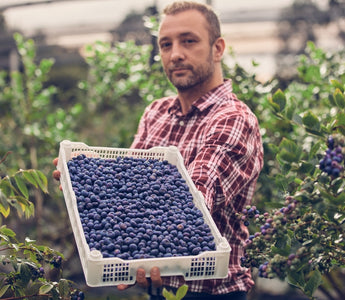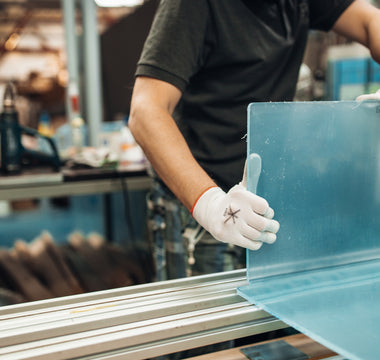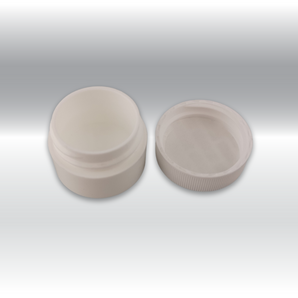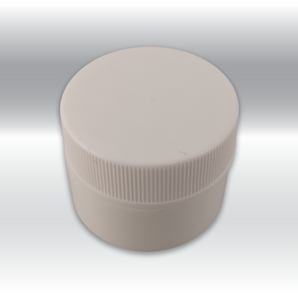Reusable Plastic Harvest Containers; Lugs, Crates, Totes, Trays, Bins, Buckets, or Baskets; no matter what you call them RPCs are an essential part of your process.
Whether you are involved with Harvesting, Processing, Packing Transporting, Distributing and Storing fresh Fruits, Vegetables, Meat Poultry, Shellfish or other specialty produce, you share the common need to move from growers & producers to consumers, safely & efficiently.
Does it ultimately matter what RPC you select for your process? It does, and today we'll help you dial in on finding what will best work for you and your workflow. Correct RPC’s help minimize contamination, reduce mix-ups, and wasted time. While ultimately there is no definitive right or wrong answer, what you choose effects a combination of productivity, employee ergonomics & safety, efficiency and ultimately budget. Consistency is key.
Traditional materials used in harvest containers have limitations that can be eliminated with reusable plastic containers.
- Wood, fiberboard/pressboard or metal can be prone to corrosion and harbor molds, fungus and contamination that will harm your product.
- Disposable containers, such as 1-way waxed corrugated boxes have limited ventilation and may compromise environmental stewardship commitments. While their folded construction and inability to drain when wet, can lead to failures and product damage.
Reusable Plastic Crates/Containers (RPCs) have many benefits including hygiene, durability, produce quality and freshness, and no water absorption. RPCs are weather resistant, stack for improved product transportation, and some nest to provide excellent space utilization and last many years.
Different sizes of RPCs address the requirements of various types of fruit and vegetables produce lifecycle (harvesting, processing, packing, transportation).
Here are some points you may want to consider:
- The type and size of your produce: Harvest totes, trays and lugs come in different shapes and sizes, designed for specific types of fruits and vegetables. There are a range of flats for delicate berries, mid-sized totes for mushrooms and lettuce, or deep lugs for cucumbers, squash and larger tree fruits. You should choose the containers that match the size and shape of your produce, to avoid bruising, crushing or damaging them.
- The durability and quality of the material: Reusable Plastic Containers should be made of a strong, durable yet lightweight material that can withstand the harsh conditions of the field, the processing facility and a lifetime of round-trip transportation. Often overlooked, but verify with your supplier, that the products being offered are UV resistant and suitable for use outdoors exposed to sunlight. One of the most desirable materials is HDPE, which is available in excellent colours yet resistant to mold, pests, splinters and pathogens. You should also look for containers that are easy to clean and sanitize, to ensure the integrity of your quality process.
- Availability of Colors & Custom Labelling: Plastic Harvest Containers are available in a wide range of bright and durable colors. Will different colors help your process? Some producers value the ability to differentiate field totes from storage totes or cull-buckets from harvest buckets. Similarly, many containers can support custom labeling in the form of heat-imprinting and colour transfer text. Do your containers need to support RFID or other tracking, quality control and identification.
- The ventilation and drainage of the container: RPC’s should have adequate ventilation and drainage, to allow air circulation and moisture removal. This helps to prevent overheating, spoilage and decay of the produce, especially in hot and humid environments. Ventilation and drainage features also reduce the weight of the containers, making them easier to handle and transport. These features should be designed to not impeded for proper cleaning and sanitization.
- The stack-ability and nest-ability of the container: Proper Harvest Containers should be stackable and nestable, to save space and improve efficiency. Stackable containers can be piled on top of each other, without damaging the produce or compromising the stability. Nestable containers can fit inside each other, when empty, to reduce the storage space. In some cases, containers can be designed to collapse and folded flat when not in use. Also ask, do you need lids to protect the contents, tray dividers to segregate products inside, or handles to make lifting and toting more ergonomic?
- The cost and availability of the container: Harvest containers should be affordable and available, to suit your budget and needs. You should compare the prices and features of different containers, but also look for a vendor that can help you mix and match the colours, styles and sizes, without making you commit to overly large orders to get the right price. While bulk-buys and volume orders can help save unit price, overstocking containers that you have to store on site is not saving you money. Work with vendors who stock the materials you want, so you don’t have to. Also consider the availability and delivery time of the containers, especially during peak seasons, to avoid delays or shortages.
- Recyclability: Light, Strong, Corrosion Resistant, Impact & Crack Resistant = Low-Maintenance… Reusable Plastic containers have a lot to offer. Most modern plastic containers are available 100% recyclable, and many reputable wholesale vendors have programs in partnership with manufacturers, to support recycling.
If you want to discuss what your industry needs for customized reusable plastic harvest containers, contact your local Industrial Plastics & Paints, or email us with the form below.
Industrial Plastics & Paints is your project store for specialty plastic products, with 7 locations in Western Canada including Victoria, Nanaimo, Courtenay, Richmond, Mission, Kelowna and Calgary.
For over 70 years, Industrial Plastics & Paints have supported the wholesale needs of growers, packers, distributors, and retailers.




